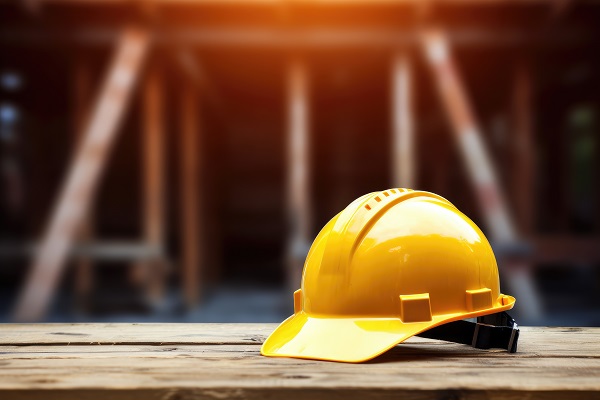Safety Helmets: How To Make The Right Selection

Work-related head injuries are often the result of construction accidents. They’re typically caused by being struck by objects, falling, or accidents involving machinery. These injuries range from mild concussions to severe traumatic brain injuries. They often lead to significant medical expenses, lost work time, and long-term disability. The risk of head injuries on the job highlights the need for safety helmets that offer adequate protection.
With so many different styles, price ranges, and claims of enhanced protection, choosing the right helmet for work is no simple feat. This task is further complicated by a lack of comprehensive test data offering clear, evidence-based recommendations. However, it’s important to focus on brain protection, laceration protection, and helmet retention when making your decision.
Brain protection challenges and solutions
Historically, helmet design has somewhat neglected brain protection, particularly against rotational motion, a key factor in concussions on job sites. Helmets need to address two types of head injuries: skull fractures and brain injuries.
While a rigid outer shell and inner liner can mitigate skull fractures caused by direct impacts, they are less effective against many brain injuries. These typically result from rotational forces during impact, causing brain shearing and potentially irreversible damage.
Notably, over 60% of work-related brain injuries arise from slips and falls and same-level falls. About 90% of them don’t involve skull fractures. This highlights the distinct mechanisms affecting the brain compared to the skull. Recognizing this, sports helmets have incorporated the multi-directional impact protection system (MIPS) to dampen rotational forces. Similar technologies are now emerging in safety helmets.
Do safety helmets offer laceration protection?
Traditional helmets are primarily designed for crown impacts. However, they often fail to provide adequate laceration protection. A study from 1987 highlighted this deficiency, noting the limited effectiveness against side impacts. The ANSI standard Z89.1 addressed this by introducing the Type II designation, indicating helmets tested for lateral impacts.
Despite this, many leading brands still offer predominantly Type I protection. This highlights the need to choose ANSI Type II certified helmets for better lateral impact protection.
Do safety helmets offer retention during an impact?
A helmet’s protective capability should allow it to remain securely in place during an impact. While chin straps are crucial for this, the U.S. standard ANSI Z89.1 doesn’t mandate them but requires retention testing if included.
The European standard EN 12492 for mountaineering helmets necessitates chin straps but has less stringent lateral impact testing compared to ANSI Z89.1. Therefore, helmets with chin straps that meet or exceed ANSI Z89.1 Type II performance are advisable for optimal protection.
Choosing a safety helmet by industry
Various types of safety helmets are used in different industries to prevent workplace injuries. Here are some of the common types:
- Standard hard hats: These are typically used in construction, mining, and manufacturing. They protect against impact from falling objects and bumps against fixed objects.
Full-brim hard hats: These are similar to standard hard hats but with a wider brim that offers additional protection against sun, rain, and falling debris.
Bump caps: These are lighter and more comfortable than hard hats. They’re designed for environments where workers risk hitting their heads against stationary objects rather than from falling objects.
Safety helmets with face shields: These are used in environments where face and eye protection is necessary, such as in industrial manufacturing or certain types of construction.
Welding helmets: These provide protection against the intense light, ultraviolet, and infrared radiation generated during welding. They also protect against hot metal and slag that can fly off during the welding process.
Electrically insulated helmets: These helmets are made of non-conductive materials. They’re designed for electricians and other workers exposed to the risk of electrical hazards.
Thermal helmets: These are used in environments with extreme heat or cold. They provide thermal insulation to protect the head from extreme temperatures.
Know your rights in the event of a head injury on the job
Safety helmets may reduce the likelihood of a head injury, but they’re not foolproof. If you’re a worker who has sustained a head injury on the job, you may be out of work for an extended period. You may be eligible for compensation through a workers’ compensation claim. However, simply filing a claim doesn’t mean you’ll successfully obtain the benefits you deserve.
Any errors in the application and filing process can lead to your benefits getting delayed, reduced, or denied. That’s why you need the help of the experienced Massachusetts and Rhode Island workers’ compensation attorneys at The Law Offices of Deborah G. Kohl. Our legal team can ensure your application is properly filled out and the filing process goes smoothly. Plus, we can help you get the right medical care and advocate for fair compensation on your behalf.
Contact us online or call us to find out how we can help you. We offer free consultations, and there are no obligations. Let us learn about your workplace accident, provide guidance, and answer any questions you have about your potential legal options. We have law offices in Fall River, Foxborough, and Providence.
